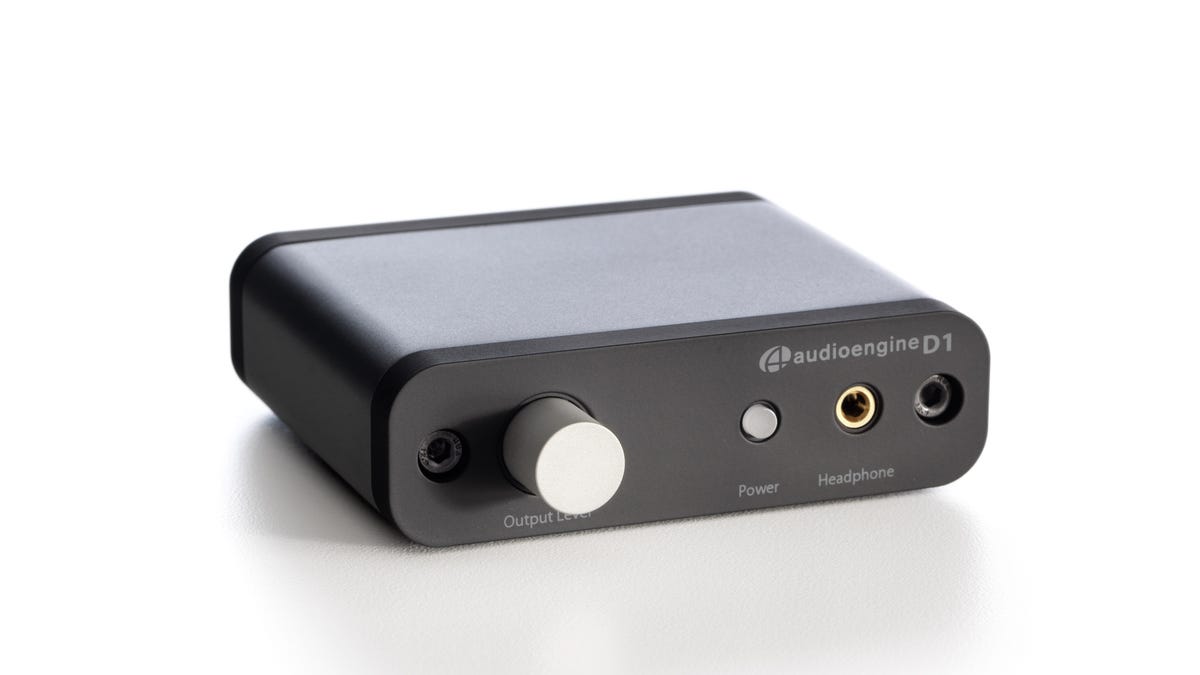Audioengine's terrific, tiny USB DAC/headphone amp
Company has a knack for making great sounding desktop gear; the new D1 is the perfect music "interface" between your computer and speakers or headphones.

Audioengine is one of my favorite brands. For me it all started with their petite A2 speakers ($199/pair), and then I gushed over their P4 speakers ($249/pair). But Audioengine isn't the sort of company that reinvents its line every year or two. No, they invest a lot of time into designing great products, and then let them be. The A2 and P4 are still in the line, and are still stellar.
I was smitten with the new Audioengine D1 USB DAC/headphone amp ($169) as soon as I plugged it in. It's a USB powered device, so there are no batteries or power supplies; just hook up a USB cable to a computer, plug in your headphones and you're good to go. Nice. The DAC supports up to 192kHz sample rates via the optical digital input, and 96kHz with USB. Both inputs handle up to 24-bit resolution. The D1 is a little thing, just 3.5x4x1 inches and weighs about a pound. Build quality feels solid, and I love the looks of the understated design.
But wait, there's more, the D1 also has a pair of audiophile grade RCA outputs on its rear panel. With those you can hook up the D1 to speakers with built-in amplifiers, like the Audioengine A2 or new A5+, or any other powered speaker. You can also hook up Apple TV or any audio component with an optical digital output to the D1.
I ran the D1 first with a pair of Audioengine A5+ speakers (review in the works) and a variety of headphones, including my Sennheiser HD 580, Hifiman HE-300, Audio Technica ATH M50 full-size headphones, and Ultimate Ears Reference Monitor in-ear headphones. Plugging in the headphones automatically mutes the speaker outputs.
The beats on Beyonce's "4" album fully exercised the D1's talents; her massive pipes are best enjoyed with the volume turned way up loud. The D1's sound was crisp and clear.
Comparing the D1 with the Hifiman HM-101 USB DAC ($39) it was immediately clear that the D1 was more transparent. Carter Burwell's score for the "Fur" soundtrack is loaded with bells and other percussion instruments and the Hifiman blunted the sound. With my Audio Technica headphones bass definition was drastically improved with the D1. Both DACs played as loud as I could stand, the differences were in the precision of the sound.
Switching over to my Hifiman HE-300 headphones the D1's transparency was even more apparent, the clarity was absolutely superb. Even hard-to-drive, 300 ohm headphones, like my Sennheiser HD 580 sounded great with the D1. I'm not sure why, but the D1 sounded too lean and thin with my Ultimate Ears in-ear headphones.
My old Dave Brubeck recordings from the 1960s amply demonstrated what the D1 was doing right, the pianist's touch and the subtlest dynamic shifts in tone were easy to hear. Listening to Brubeck's live recordings over the A5+ speakers I was impressed with the degree of concert hall ambiance and spacious the D1 retrieved.
The D1 is a great little unit, but Audioengine isn't presenting it as the ultimate DAC. Switching over to Schitt Audio's $349 Bifrost digital-to-analog converter (review to come) the tonal balance was richer, dynamic jolts kicked harder, and the soundstage dimensions expanded a bit. The Bifrost is just a DAC, it doesn't have a built-in headphone amplifier.
You can buy the D1 direct from Audioengine, or from one of its dealers.

